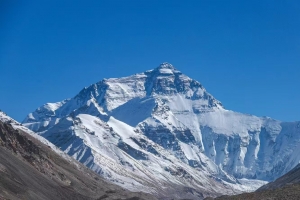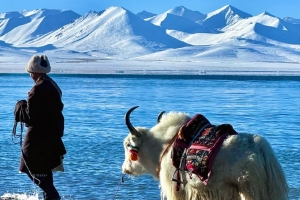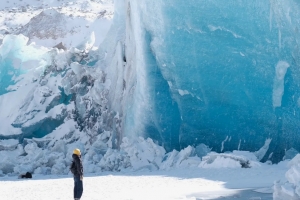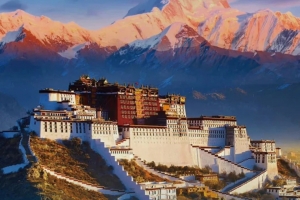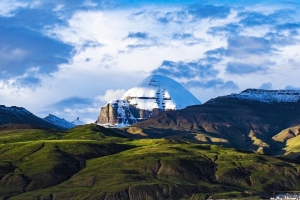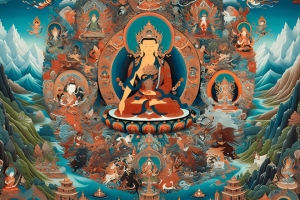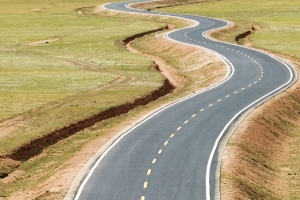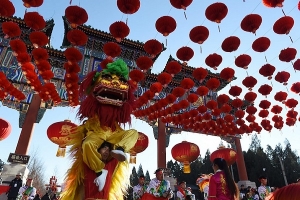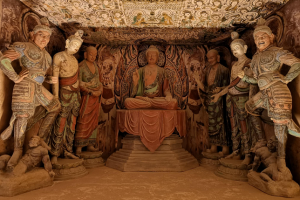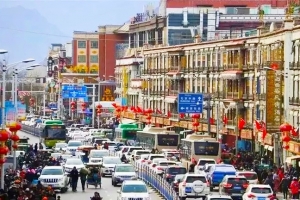Yamdrok Lake — also written Yamdrok-tso or Yamdroktso — is one of those landscapes that turns silence into a language. Nestled among the high ridges south-west of Lhasa, this sacred turquoise lake steals the show from every high pass and bend of the old Lhasa–Gyantse road. For international travelers seeking a dramatic mix of sacred culture, wild scenery, and photographic drama, Yamdrok is an essential stop on any classic Tibet route.
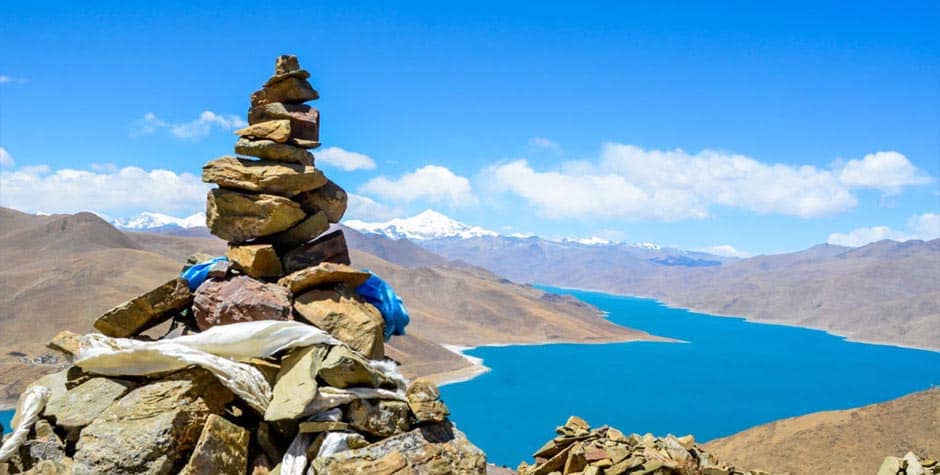
Why Yamdrok Feels Like a Shrine of Color?
What makes Yamdrok so unforgettable is the color — a changing palette of blues and greens that shift with sun, wind and angle. Locals describe the lake as a sacred “ear-drop” of a goddess; aerial views reveal long, branching arms that snake through the valley, which is why it’s impossible to see the whole lake from ground level. The surrounding high peaks, rolling pastures and the sudden revelations at viewpoints like Kamba-la pass turn every visit into a small ritual of discovery.
Sacred Stories and Local Belief of Yamdrok Lake
Yamdrok is not only a pretty lake — it is one of Tibet’s most venerated lakes. Local folklore says the lake was once a heavenly maiden who descended and transformed into water; as such, Tibetans regard Yamdrok as a female guardian of Buddhism for the region. For pilgrims and villagers, the lake holds spiritual power: circumambulation rituals, blessings and local taboos around disrespectful behavior are part of the cultural fabric here. When you visit, remember this is a living spiritual landscape — dress and act respectfully.
Yamdrok Lake facts you should know
Altitude: roughly 4,441 meters (14,570 ft) above sea level.
Size and shape: Yamdrok is irregular and deeply indented — traditionally described as having several long arms and multiple small sister lakes that together form the whole. Estimates of length and area vary by source; modern figures commonly report the lake’s surface area around the mid-hundreds of square kilometers.
Depth: commonly reported between 20–60 meters, with some deeper pockets.
Location: Southwest of Lhasa, visible from the Kamba-la (Kambala) pass on the old Lhasa–Gyantse route.
How Yamdrok Was Formed
Geologically, the lake sits at the northern foot of the Himalaya and appears to be a product of complex glacial and tectonic activity. Some accounts describe Yamdrok as a type of “quake lake” formed when running water was blocked by glacial debris or landslides, creating the long, sinuous basin you see today. That irregular shoreline and the multiple arms are a direct result of those ancient movements and the mountainous context.
Wildlife and Birding of Yamdrok
Yamdrok is also a vital habitat for birds in southern Tibet. During migration and the breeding season the lake and its small “islands” host swans, bar-headed geese, gulls, and a range of waterfowl. There is a tiny island often referred to as “Bird Island,” where thousands of birds congregate; for nature lovers and photographers this can be as compelling as the view itself. If birdwatching is on your list, bring binoculars and a telephoto lens.
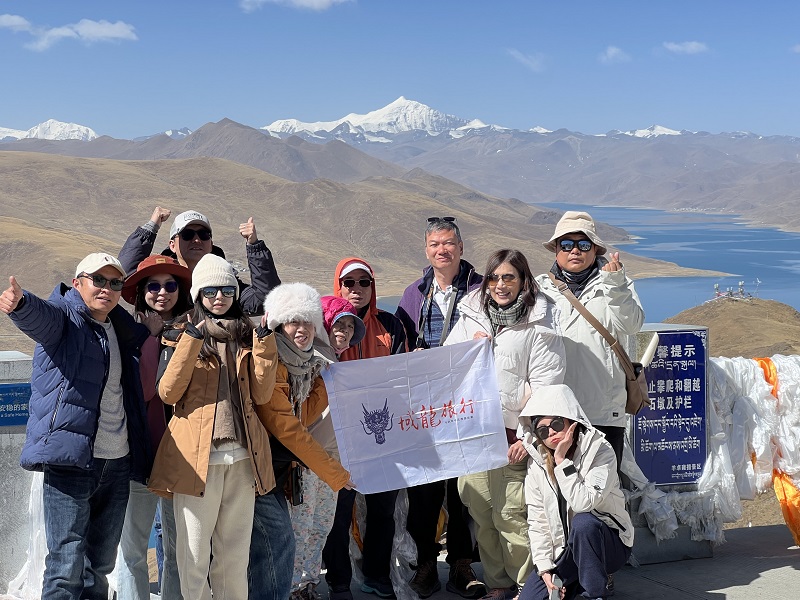
Best Viewpoints and Photography Tips of Yamdrok
- Kamba-la (Kambala) Pass: This is the classic panorama. From the pass you can look down onto the lake’s arms and watch the color gradients shift with the weather. Morning light is clean and crisp, while late afternoon produces warm glows on the surrounding slopes.
- Lakeside meadows: A gentle stroll to the lakeshore (where permitted) gives you the chance for low-angle shots, reflections and intimate pastoral scenes with grazing yaks.
- Aerial or satellite view: If you want the “ear-drop” shape in one frame, maps or drone footage (where allowed) will show the full form — but note that drone regulations in Tibet are strict, so check with local authorities and your tour operator.
Photography tips: use a polarizer to reduce surface glare, bracket your exposures for dramatic skies, and protect batteries and cameras from cold and thin air.
When to Visit Yamdrok?
Yamdrok is accessible year-round, but seasons shape the experience:
- Spring–early summer (May–July): Fresh alpine pastures, migrating birds and clear skies — excellent for both color and wildlife.
- Late summer (August): Weather can be variable; occasional rain but lush grasslands.
- Autumn (September–October): Crisp air and clear vistas; a great window for photography.
- Winter (November–March): Far fewer visitors and stark snow contrasts; roads can be icy and some passes may be challenging.
No matter the season, altitude means strong sun during the day and cold nights — plan layers and sun protection.
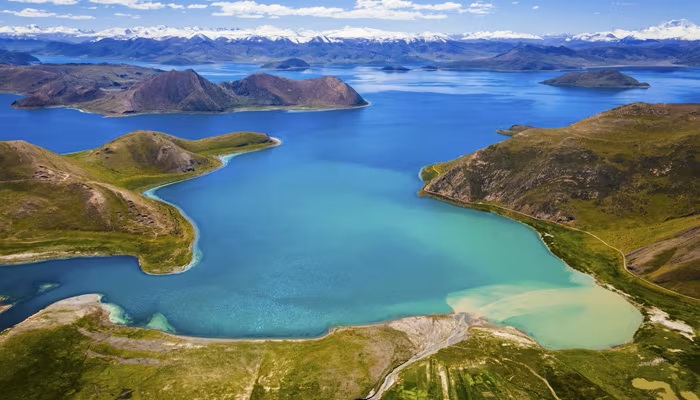
How to Get to Yamdrok?
The most common route is a road trip from Lhasa to Gyantse, with Yamdrok sitting roughly along that old highway. Many tours approach via the Kamba-la pass to take advantage of the sweeping viewpoints. Travel times depend on road conditions and stops, but it’s typically a two- to four-hour drive from Lhasa if you move directly; most travelers combine it with a longer Lhasa–Gyantse–Shigatse itinerary to soak in acclimatization and other attractions. Always allow extra time for stops — the road itself is full of photo opportunities.
Yamdrok Altitude – Over 4,400 Meters
At over 4,400 meters, Yamdrok sits at high altitude. Acute mountain sickness is real and common if you rush your arrival to higher elevations:
- Acclimatize in Lhasa (3,600+ m) for at least 1–3 days before driving higher.
- Stay hydrated, avoid heavy meals on the first day, and move slowly on foot.
- If you have a history of severe altitude issues or heart/lung conditions, consult your doctor before travel.
Yamdrok Sample Half-day Stop or Day-trip Plan
- Early departure from Lhasa after breakfast.
- Stop at scenic pullouts en route for photos and short walks.
- Arrive at Kamba-la viewpoint mid-morning; take time to photograph and acclimatize.
- Descend to a lakeside meadow for lunch (picnic or a local tea stop) and gentle exploration.
- Optional side drive to nearby villages or the Karola Glacier (season and road permitting) before returning to Lhasa or continuing to Gyantse.
Responsible Sightseeing at Yamdrok
Yamdrok is fragile: avoid single-use plastics, keep to roads/trails where directed, take all your waste with you, and respect local signage. If you’re with a tour operator, ask what measures they take to minimize environmental impact; small choices matter in highland ecosystems.
Final Thoughts & Yamdrok Travel Help
Yamdrok Lake is one of those places that rewards patience: the longer you watch, the more the water and the light reveal themselves. Whether you’re a pilgrim, photographer, birdwatcher, or simply a traveler in search of unforgettable landscapes, Yamdrok offers a mix of sacred atmosphere and raw alpine splendour that is uniquely Tibetan. For practical planning, guided options, permit assistance and tailored itineraries that include Yamdrok along the classic Lhasa–Gyantse route, Journey2tibet can help craft a trip that balances cultural respect, acclimatization and the best possible viewing windows. If you’d like, contact Journey2tibet.

